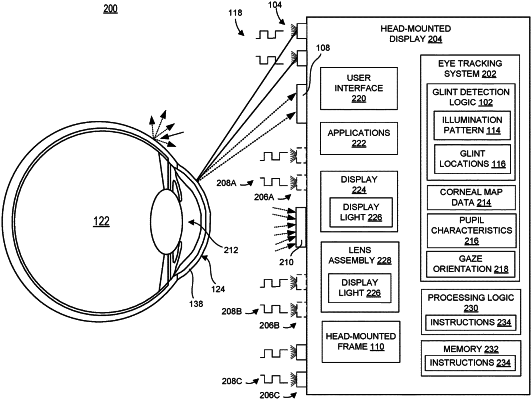| CPC G06F 3/013 (2013.01) [G06T 7/73 (2017.01); G06V 40/19 (2022.01); G06V 40/193 (2022.01); H04N 23/56 (2023.01); G06T 2207/10048 (2013.01); G06T 2207/10152 (2013.01); G06T 2207/30201 (2013.01)] | 18 Claims |

|
1. A glint detection system comprising:
a pair of light sources positioned on a head-mounted frame to illuminate a corneal surface of an eye with differential light signals, wherein the differential light signals include two opposite light states that concurrently switch based on a pattern;
an image sensor positioned on the head-mounted frame to receive reflections of the differential light signals from the eye; and
processing logic coupled to the pair of light sources and to the image sensor, wherein the processing logic drives the pair of light sources to emit the differential light signals, wherein the processing logic receives, from the image sensor, image data that is representative of the reflections of the differential light signals, wherein the processing logic determines an orientation of a cornea of the eye at least partially based on the image data,
wherein an integration of a plurality of the reflections of the differential light signals produces a first cluster of pixels and a second cluster of pixels,
wherein a first of the pair of light sources is positioned a distance from a second of the pair of light sources so the first cluster of pixels is adjacent to the second cluster of pixels,
wherein the first cluster of pixels nearly touches the second cluster of pixels in an image map representation of the integration of the plurality of the reflections of the differential light signals.
|